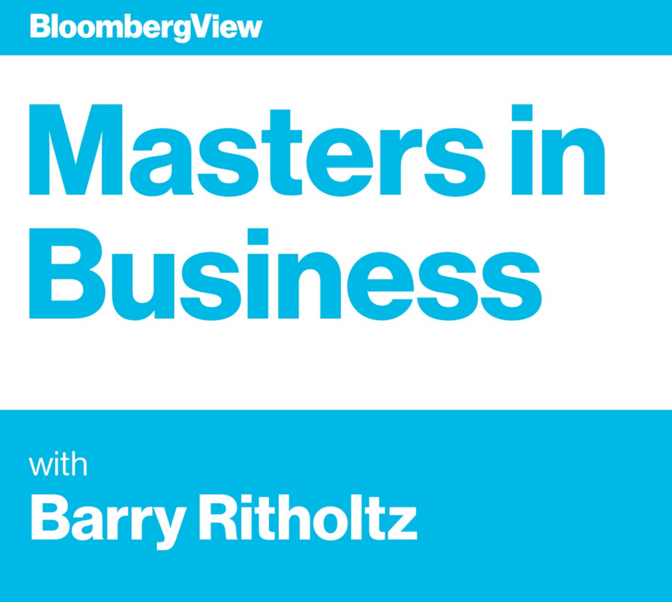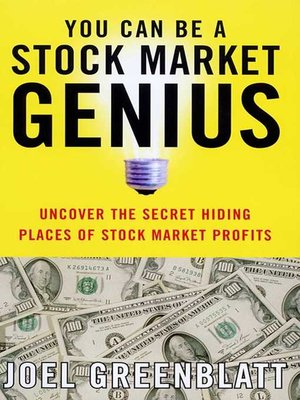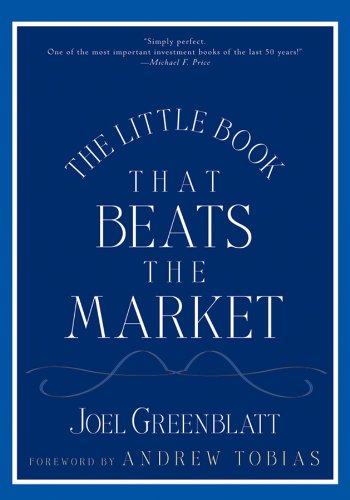You will have noticed, no doubt, my belief that the information we use to make investment decisions comes from a variety of sources. The data is lurking out there in a wide range of forms for us to discover. Reading is an obvious one, as is meeting and talking with interesting, successful people. Listening is another valuable source of information and I have found podcasts to be both an extremely informative and efficient way of digesting information over time. Given today's excellent variety of formats in which we could hear these sound bites, you can listen in the car on the way to the office, during lunch, or even at work.
One of the best Podcast series I've found is Barry Ritholtz's interviews titled, 'Masters In Business'. Ritholtz runs a great blog. He intuitively understands markets and investing, and he gets a first class line-up of interesting subjects from a diverse array of fields - from finance to physics professors and even poker champions. Some of my favorites have included Ed Thorp, Brian Greene, Yuval Noah Harari, Marc Andreessen, Jeffrey Sherman and Ray Dalio to name but a few. I enjoyed a recent episode where Ritholtz interviewed Investment Master, Joel Greenblatt. Greenblatt's early success included running Gotham Capital, a hedge fund which compounded capital at an astonishing 50%+pa between 1985 and 1995. I've included some of my favourite comments below ...
On Diversification...
Greenblatt notes one way to get high returns is to be concentrated. When he ran Gotham Capital, six to eight ideas comprised 80 percent of his fund. He notes that while portfolio management theory doesn’t agree with that strategy, Warren Buffett provides a useful counter:
"[Buffett says] Let’s say you sold out your business and you've got $1 million and you are living in town and you want to figure out something smart to do with it. So you analyze all the businesses in town and let’s say there's hundreds of business. If you find businesses where the management is really good, the prospects for the business are good, it’s run well, and they treat shareholders well, you divide your million dollars between eight businesses that you researched well. No one would think that’s imprudent, they would actually think that was pretty prudent.
"But when you call them stocks and you get stock quotes daily on these pieces of paper that bounce around, people put numbers on it, and volatility, and all these other things where really it’s not that meaningful. You know from one sense if you’re investing in businesses and you did a lot of research and invested in eight different businesses with the proceeds of your sale, people would think you’re a pretty prudent guy.
"All of a sudden if you invested in stocks and did the same type of work, people think you’re insane. It’s just an interesting analogy that I think of when people make fun of me that I was concentrated."
Patience and Hedge Fund Fees - A Conundrum
"I have sat on Penn’s investment board for 10 years, and I saw most of the [hedge fund] managers out there and not many justify one and a half and 20 or two and 20.
And the other part that’s wrong with the hedge fund businesses is that when people pay those kind of prices [ie fees], they are not very patient. So it’s the worst of all worlds. You know, you’re charging too much to your clients and they don’t stay very long because they’re impatient when they're paying so much."
Reading and Mentors
"One of the reasons I read books is because my mentors really came from reading. People who were kind enough to share with me their wisdom over time, people like Andrew Tobias and Benjamin Graham and even Buffett in his letters and David Dreman, who wrote Contrarian Investment Strategy and John Train who wrote the Money Masters. All these people really were helpful in forming and getting me involved in investing and you know I wanted to share some of the things that I learned too, because that’s how I learned.
It really wasn’t so much you know them, some of these people were dead and [yet] they were still sharing [knowledge] with me."
Investors Can't Stick with Winning Funds
"From 2000 to 2010, this was a period where the market was flat but the best-performing mutual fund for that decade was up 18 percent a year. The average investor in that fund managed to lose 11 percent a year on a dollar-weighted basis by moving in and out at all the wrong times.
Every time the market went up, people piled into that fund, and when the market went down, they piled out. When the fund outperformed, they piled in, when the fund under-performed they piled out. They took that 18 percent annual gain when the market was flat, so that’s great on an annualized basis over 10 year period to beat the market by 18 points, but for outside investors, they went in and out so badly that the average investor on a dollar weighted basis lost 11 percent a year."
Great Managers Underperform & Are Hard to Stick With
"I wrote up a study of institutional managers that showed the top-performing institutional managers for the same decade, 2000 and 2010. Who ended up with the best ten-year record? And, who ended up in the top quartile, what did the results look like?
What the study showed was that 97 percent of those who ended up with the best 10-year record spent at least three of those 10 years in the bottom half of performance. Not shocking. But to beat the market you have to do something different.
Seventy-nine percent of those who ended up with the best ten-year record spent at least three of those 10 years in the bottom quartile of performance. And what I love is that 47 percent that ended up with the best 10-year record, spent at least three of those 10 years in the bottom decile, the bottom 10 percent of performers.
So, you know, no one stayed with them."
Remaining Independent & Disciplined
Greenblatt tells the story of how he used an experiment to teach a group of ninth graders from Harlem the concept of independent work and decision making.
"For just one day a week, for an hour a week, we'd come in and teach them [ninth graders] about the stock market ... I had a fresh opportunity - blue sky with them not know anything about the stock markets - so I really thought long and hard about how I was going to explain the stock market to them.
And so on the first day's class, I brought in a big jar — one of those old-time glass jars filled with jellybeans. I passed out 3 x 5 cards and I passed the jellybean jar around and I told them to count the rows and do whatever they had to do, and write down how many jellybeans they thought were in the jar. I then went around the classroom and collected the 3 x 5 cards.
Then I said I’m going to go around the room one more time and ask you in front of everybody else how many jellybeans you think are in the jar. I told them you can keep your guess from your 3 x 5 card, or you can change your guess, that’s completely up to you. One by one I went around the room and I asked each student how many jellybeans they thought were in the jar and I wrote that answer down.
So let me tell you the results of the experiment. The average for the 3 x 5 cards, the first guess, was 1771 jellybeans. That’s what it averaged to. There was actually 1776 jellybeans in the jar. So that was pretty good. When I went around the room one by one asking each person publicly how many jellybeans they thought, that average guess was 850 jellybeans.
I explained to the kids that the second guess was actually the stock market. What I was trying to teach them to do is be the first guess; be cold and calculating, count the rows, be very disciplined in valuing the businesses and not influenced by everyone else around them. When the second guess came in what happened? What everyone heard was what everyone else was saying and in the stock market, everyone reads the newspapers, they talk to their buddies, they see what everyone else is saying and doing and reading. They're seeing the results in the news every day and they are influenced by everything around them and they’re not being cold and calculating and disciplined.
And so I was going to teach [the students] how to be cold and disciplined and that’s what we try to do. We have a very disciplined process to value businesses and that’s what I was teaching them to do and that is what stocks are, ownership shares of businesses. All the noise, 99.9 percent of the noise you read in the paper every day is really noise, and so that’s — you know, that lesson really resonated"
The Big secret
"If you can step back and take a longer time horizon, that is the big secret"
Summary
A lot of this speaks to my last post on independent thinking and being out of town. Joel's lesson to the ninth graders is a very powerful message on how we can be influenced by the noise from the herd. How, after careful analysis and independent thought, the class on average was able to accurately determine the contents of the jar. And then, when given another opportunity, they were influenced by the 'noise' of those around them, somehow believing the class knew more then they did, and changed their estimate to one that was inherently incorrect. And how true is that? How often is the market affected by uninformed decisions like this? How often are we influenced by others that know less than us? Joel's thoughts and opinions are valuable to us all and I strongly recommend that you listen to the podcast.
Further Reading:
Greenblatt - WealthTrack Interview
Greenblatt - Talks at Google
Greenblatt - Interview with Howard Marks @ Wharton
Greenblatt - Graham & Doddsville Interview
Books:





